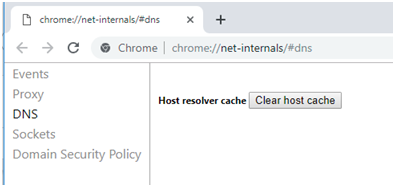


You can check your operating system's logs to see which DNS records are cached locally. Therefore, even if the local DNS cache is empty, the resolver may have a cached copy of the required information thus, avoiding the need to go through the complete DNS lookup process. At each step, information is gathered and cached for later use. During a new DNS lookup, the lookup passes through the resolver, root server, and TLD server. In fact, as mentioned above, a DNS lookup involves various steps. However, if you need a more comprehensive explanation of cache, check out our cache definition article.ĭNS caching does not only occur at the OS and browser level. The basic function of different cache types is all more or less the same. Keeping a local copy of a DNS lookup allows your OS or browser to quickly retrieve it and thus a website's URL can be resolved to its corresponding IP much more efficiently. What is DNS cache?ĭNS cache refers to the temporary storage of information about previous DNS lookups on a machine's OS or web browser. In this article, we'll further explain what DNS cache is as well as outline how to flush your DNS cache. Luckily, there is a mechanism in place to help reduce the frequency of which a website visitor's browser must request a complete DNS lookup. Needless to say, each additional check, adds extra time that the visitor must wait to receive a response. However, this process takes time since once a new website request is made, the client must ask the resolver, which asks the root server, which asks the TLD server, for information. Basically, a DNS server is used to resolve a particular domain to its IP equivalent. We've covered the topic of what a DNS server is in the past and explained how they work.


 0 kommentar(er)
0 kommentar(er)
